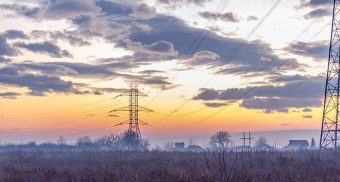
Portugal is taking an early lead in renewables to such an extent that for the month of March it produced 4.3% more renewable electricity, at 4,812 GWh, than its total electricity consumption of 4,647 GWh. Perhaps more impressively, Portugal put up these numbers in the face of a massive 9.7% year over year increase in electricity consumption versus 2017.
Now that the smoke has cleared from the candles on the celebratory cake, there is still, unfortunately, a bit of a haze over the country, as it still relies on fossil fuel-fired electricity generation to cover the periods when consumption exceeds production at the instantaneous level.
Digging into the details, renewables supplied at least 86% of Portugal’s electricity consumption on the low end and a maximum of 143%. There was also a full 70-hour block when the country ran on renewables alone.
Portugal’s renewable electricity comes largely from hydroelectric generation and wind power, which, in March, supplied 55% and 42% (respectively) of the country’s electricity needs. The impressive adoption of renewables in Portugal is also helping the country save money it would have had to spend on purchasing emission allowances to the tune of €21 million for the 1.8 million tons of CO2 that were not generated thanks to renewable production.
The peaks and valleys between renewable electricity production periods and electricity consumption highlight the need for grid-scale energy storage. More than that, they represent a transitioning market that will see electricity pricing following real-time renewables generation or lack thereof, which will naturally prime investors to lean into residential, commercial, and grid-scale storage solutions to take advantage of pricing fluctuations.
Not having sufficient energy storage capacity in March resulted in a net export of 878 GWh — or 19% of the total electricity produced in Portugal. That’s not to say that Portugal doesn’t have grid-scale energy storage, as it does have pumped hydro to utilize excess electricity, pumping water up to higher elevations which can then be run through turbines to generate electricity when needed.
APREN shared with ArsTechnica that, though March is a relatively moderate month with its typical high potential for renewable electricity generation and moderate electricity usage, it is still an impressive feat that bodes well for the future: “These data, besides indicating a historical milestone in the Portuguese electricity sector, demonstrate the technical viability, security, and reliability of the operation of the Electrical System, with a large share of renewable electricity.”
Source: cleantechnica.com

